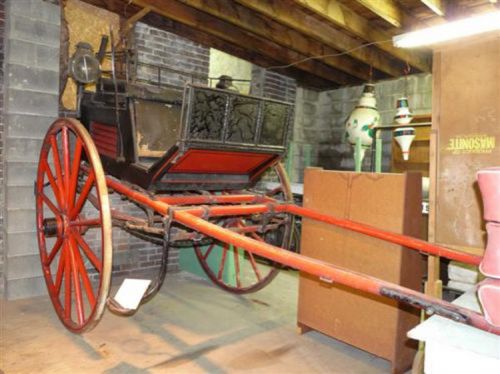The DuBois Family
1626-1809, THE FIRST DUBOIS’
The name DuBois has a long and honored history before it was bestowed on the community that now bears its name.
The DuBois family can be traced back in Europe as far back as the 9th Century. At that time it was considered a relatively old family; in fact, the house of DuBois is the oldest nobility in the French Empire with a DuBois accompanying William the First in England in his quest to conquer England.
The name DuBois means ‘the woods’’ and it is an appropriate name for later generations settled in the New York area as well as the Pennsylvania frontiers and backwoods. The family of DuBois in the U. S., starts with Louie DuBois, a Huguenot born in northern France in 1626. Due to religious persecution, he brought his family, which included two sons, to the New World in 1660.
They settled around the Hudson River Valley in New York where DuBois and his wife had eight more children. Two generations later John DuBois also had 10 children, the second oldest, John Jr., born in Owego, N.Y., in 1809 become one of the founders DuBois.
1809-1842 EARLY YEARS OF A FOUNDER John DuBois, one of the city’s founders was an early innovator in the lumber industry.
John DuBois, one of the city’s founders was an early innovator in the lumber industry.
Born in Owego, N.Y., in 1809, he started in the lumber business at age 15 borrowing money from his family to buy a thousand acres of land. This led him to the developing and building of a large logging business near Williamsport, where today there is still a town called DuBois town.
Among his lumbering inventions was a log slide and the use of underwater bridge piers. The invention of the log slide made it possible to get logs to the market when there was not much heavy snowfall during a winter. His technique of erecting bridge piers under water for transportation across the bays or rivers was later used in the construction of a bridge from New York City to Brooklyn.
DuBois is also credited with starting mass production in his industry. In his mills the logs start at one end of the mill and would not stop or go backwards until reaching the other end where the logs were ready for curing as well as shipping.
All of these ideas would be used again when DuBois moved west to the DuBois area around 1842.
1842-70, JOHN DUBOIS MOVES WEST
When John DuBois began to tire of his lumber, milling, and iron mill operations in the Williamsport area, he started to look around for other land to buy. He came west to Clearfield County for the first time about 1842, when he was 33. At that time he met the area’s only resident George Shaffer, who was living in an old logging cabin.
DuBois came to Clearfield County to stay with George, and saw the potential for the area, especially for timber. He started to buy up large tracts of land, totaling close to 32,000 acres at one time. Around 1870 he started to sell off his Williamsport holdings accumulating another large sum of money.
Already in his 60s, John was not content to retire and take it easy. Instead, he started an entirely new enterprise at the age of 63 by developing his property in Clearfield County. He returned in 1871 to see George Shaffer. But Shaffer had died and now living in his original house was a man named John Rumbarger, who also played a large role in the founding of DuBois.
1886, MONUMENT HILL BECOMES JOHN DUBOIS’ FINAL RESTING PLACE
Monument Hill, overlooking the Penn State DuBois Campus, has a history stretching back to May 5, 1886, the date of the death of John DuBois.
The "Hill" is a single burial plot, which then looked down upon the DuBois Mansion. It is the resting place of John DuBois and later had a monument spire erected over the grave.
DuBois had requested to be buried on the hill with his face toward the town. The funeral procession was even larger, numbering over 1,500, with nearly 1,000 gathering at the grave site, and 250 people attending the burial service.
Newspaper reports from the time reported the casket was encased in an underground tomb of brick and cement. The interest of the public in the area declined over the years. Early in the 21st Century the hillside was cleared and the memorial is now visible again. It stands as a monument to the man who gave DuBois its name.

The wagon above, bearing the DuBois family crest and believed to have been used for hunting, belonged to John DuBois. It is now part of the DuBois Area Historical Society's Museum.
